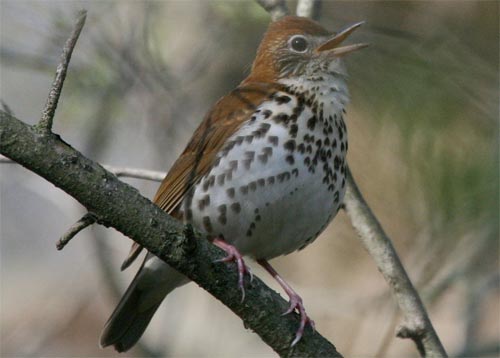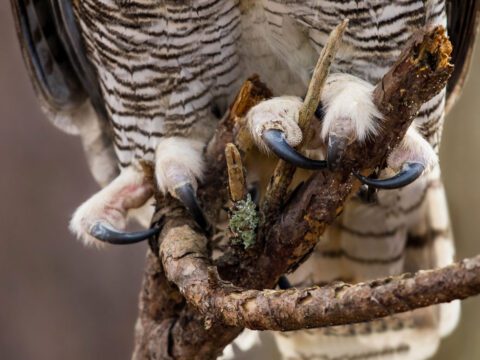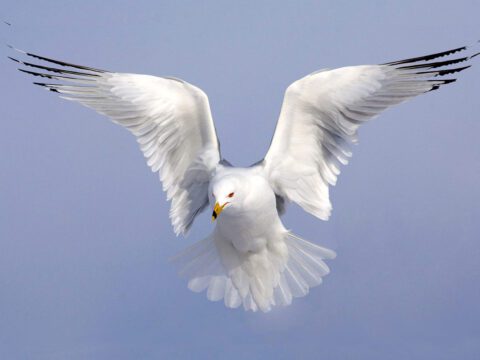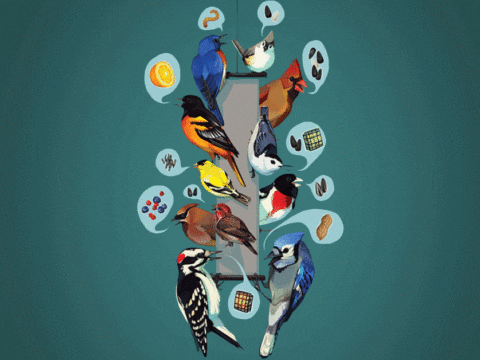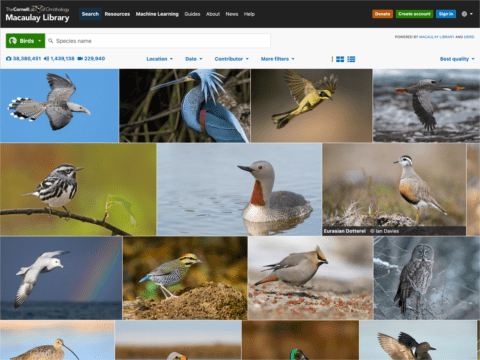Let’s Go Birding!… At Night… Blindfolded
By Lewis Grove and Mike Powers, Cornell Lab Researchers
April 2, 2009It’s April and signs of spring are nearly everywhere across North America, from warmer temperatures and longer days to emerging wildflowers and the songs of resident birds greeting sunny mornings. Over the next few months our avian neighbors will be joined by billions of migrants, fresh from wintering grounds as far away as Argentina. Listservs and blogs are thick with First of the Year (“FOY”) sightings as bird populations stream northward. It’s an exciting time to be a bird watcher.
Some of the greatest marvels of the bird world are found in migration – think of skeins of Snow geese honking their way north of treeline, tight groups of sandpipers zooming along a sandy shore, or kettles of raptors riding thermal after thermal to reach their destination. But many birds are difficult to follow on migration for one simple reason: they travel at night. These nocturnal migrants, primarily songbirds like warblers, thrushes, vireos, tanagers, sparrows, and buntings, take to the skies after dusk and return to the earth in some distant location before dawn. A morning at your favorite migrant trap is a fantastic way to see the result of last night’s migration, but how can you witness night migration as it happens?
There are a few ways to witness night flights directly. Go on the Internet and you look at your local Doppler weather radar, where you can actually see flocks of migrating birds as they form green or blue smudges similar to a passing rain system. Or step outside and point a spotting scope at a full moon. You’ll see silhouettes cross the moon’s face. With practice you can discern basic shapes and sizes, though most birds will necessarily go unidentified.
It’s actually possible to identify most of the species winging their way over your house at night, but you have to use your ears instead of your eyes. Ornithologists have known for centuries that many birds give short, species-specific calls while in sustained flight. In fact, 18th century American ornithologist Mark Catesby recognized the unique notes of Bobolinks drifting down from above his ship at night in the Bahamas. He surmised that the birds were migrating between distant landmasses by night.
In the last two decades we’ve learned a lot more about these sounds. Dedicated researchers are revealing much of the repertoire of North American nocturnal flight calls. And although rigorous study requires recording equipment and software, you can enjoy flight calls on a far simpler level. By standing outside during prime conditions in spring or fall you can hear thousands of calls from migrants far overhead. And though it takes some time to become proficient, “watching” migration with your ears is a fascinating experience.
There are even ways for amateur enthusiasts to start recording the sounds of migrants over their homes (as Wired magazine recently discovered). Over the coming spring migration, we’ll have a series of posts here that explore songbird migration and get you started with flight calls. We hope you’ll venture outside to listen to Neotropical migrants as they race towards their breeding grounds and we hope you’ll come back here to share what you experience.
For now, we’ll leave you with the encouragement of Charley Harper, a keen observer and bird artist:
“For centuries, the neo-tropical migrants . . . have shuttled between winter homes in the tropical rainforest and nesting sites in our woodlands. . . . Is your favorite songster in this flock? Each April, I listen anxiously to the dawn chorus for the return of my favorite, that world-class flutist, the Wood Thrush.”
– Charley Harper on his painting, “Mystery of the Missing Migrants,” 1990
Go here to see Harper’s painting (and have a go at identifying the birds in the frame). And remember, you don’t have to wait for the dawn chorus to hear your favorite migrant – with a little practice, you can hear them at midnight!

All About Birds
is a free resource
Available for everyone,
funded by donors like you
American Kestrel by Blair Dudeck / Macaulay Library
